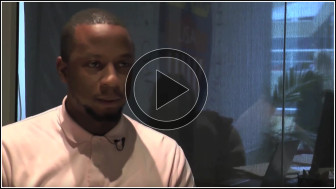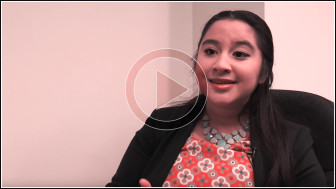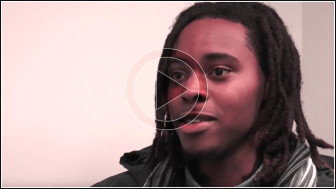Three years ago, Dejohn Taylor’s life was in turmoil.
Substance abuse had sent him spiraling toward self-destruction. He was finding himself in violent situations. He lost a loved one as a result of drug activity in Washington.
So he left the metro area for Chesterfield, Virginia, where a guidance counselor turned him on to mentoring, and he volunteered to teach elementary-aged school kids about the dangers of drug abuse.
Now, Taylor, 19, is back in Washington and a member of the Community Anti-Drug Coalitions of America’s National Youth Leadership Initiative, a nationwide, youth-led effort to train community coalitions focused on substance abuse prevention.
“I wanted to make sure that I continuously was able to use what I had been through — my message and my life story — to try to show others how staying away from drugs can assist them in their journey,” Taylor said of his involvement with CADCA and NYLI.
Substance abuse at a young age can have negative effects on the developing adolescent brain. Research has shown that the earlier a person begins to use drugs, the more likely it is that serious problems such as addiction will occur later.
Organizations such as CADCA and the Mentor Foundation are working to prevent young people from using drugs in the first place. In recent interviews, Taylor and others from the two groups shared strategies for changing the conversation about drugs and engaging youth in prevention.
Tackling stigmas
“Stigma is [the top enemy] to people who are trying to do this kind of work,” said Joseph Green, program director for the Mentor Foundation.
Recovery is hard, he said. But facing students, administration and parents shouldn’t be.
One way to begin breaking down stigmas is by talking about substance abuse as a mental health and public health issue, said Melanee Piskai, 20, a trainer for CADCA.
“And we can understand that because it is a mental health issue, that means that it can be treated, it can be prevented,” she said.
Substance abuse should not be treated as an evil thing that happens to bad people, Green said.
“When you attach shame to it, then you are also scaring as opposed to informing.”
Telling kids the truth
Speaking candidly to kids about drugs is the number one thing organizations can do to prevent substance abuse, Taylor said.
“You have to be truthful with them,” he said. “You have to really shine light on not just the negative effects, but let them know the effects that these drugs have.”
That means letting kids know that drugs will make you high. They might make you feel good. But they also have destructive effects.
Stephanie Akoumany, director of mentoring at the Mentor Foundation, said that kids are inevitably going to encounter drugs. But arming them with facts will help them make the right decisions in those situations.
“The goal is that if you have enough facts, no matter what you do in life … that you won’t abuse that behavior,” she said.
One way the Mentor Foundation supplies those facts is through an interactive show called “Shattering the Myths.”
The show, which takes place in schools and features speakers on substance abuse and recovery along with testimony and creative writing from students, is meant to take the “amorphous idea that ‘drugs are bad’” and show kids the specific effects drugs have, Green said.
One portion of the show features stories about famous people who have struggled with drug abuse.
There is a “misconception that people who have everything don’t suffer from drug abuse,” Green said. Breaking down that perception and showing kids that it’s “uncool” is important.
“They’re their heroes. And … just like with their parents, once they take that Superman off their chest that you have when they’re little kids, it becomes real,” Green said. “And if they accept that realness, and are vulnerable, then you have a better chance of making a genuine connection.”
Engaging kids
Getting young people involved with prevention can be a challenge, Green said.
“We are a very small cricket chirp in a cacophony of sounds these kids are exposed to every day,” he said. “It’s really hard to make doing the right thing cool.”
The writing workshop portion of the program has been most effective at engaging kids, he said. It’s a chance for them to express how they’re feeling and what’s going on in their life in a creative way.
Kids then have the opportunity to share their work during the show.
“It’s a really good way for kids to see that you’re not smarter than addiction, and that your pain is not unique,” he said. “There are other people who are going through the same thing.”
For CADCA, which represents community coalitions across the country working to bring about systemic, population-level prevention, engaging kids starts with using data to identify a community’s problem areas.
In West Chester, Pennsylvania, where Melanee Piskai got started in coalition work as a teenager, underage drinking was the problem that needed addressing. In Washington, she said, it’s synthetic marijuana.
Each issue requires a different prevention strategy based on the cultural values and special populations that exist in that community.
“We provide lots of coalitions with strategies for reaching out, whether it be going through schools … a lot of times it’s going through families,” Piskai said. “A lot of times it’s reaching out through people who are involved in the rehabilitation process and working backwards.”
At the individual level, engaging kids in prevention is about building relationships first, Dejohn Taylor said. When he was mentoring in Chesterfield, he helped kids with homework and played sports after school before talking to them about drugs.
“We were able to really build a strong bond with the kids that we were mentoring,” he said. “And I find that that was essential in us being able to sincerely give information to them related to substance abuse.”
Making an impact
For Green, the question of impact has to do with what happens after “Shattering the Myths,” when the show is over and the Mentor Foundation has left the school.
Students surveyed immediately after the performance indicated a bump in substance abuse prevention awareness, Green said. But in order to maintain that awareness long-term, the foundation established the Youth Ambassador Network.
The program identifies and trains a select group of students within each school who “want to make a difference,” Green said. The ambassadors are then in charge of planning activities such as open mics and pizza parties that include discussions about substance abuse.
“So you’re engaging [students], not talking to them,” Green said. “And [the youth ambassadors] are in charge of making those projects themselves.”
Surveys three or six months later will continue to measure impact, Green said. But sometimes, seeing the program’s effect first-hand beats the data.
“Sometimes you can just see it in their faces,” he said. “There’s a buzz.”
Longitudinal evaluations have shown that CADCA’s coalition approach to substance abuse prevention has been effective at lowering rates of substance abuse in communities, sometimes in as little as three months, said Kareemah Abdullah, CADCA’s vice president of training operations.
In addition, NYLI trainers like Taylor and Piskai have demonstrated increases in their leadership skills and civic activism and engagement.
“Their whole social consciousness has shifted,” Abdullah said.
Taylor said coalitions work because they involve people actually living in the community who have been touched by the problem.
“When you have individuals in a specific community tackling problems pertaining to substance abuse, it makes them more passionate about it,” he said. “It actually gives them the drive and the willpower to make sure that this problem is eliminated.”




































